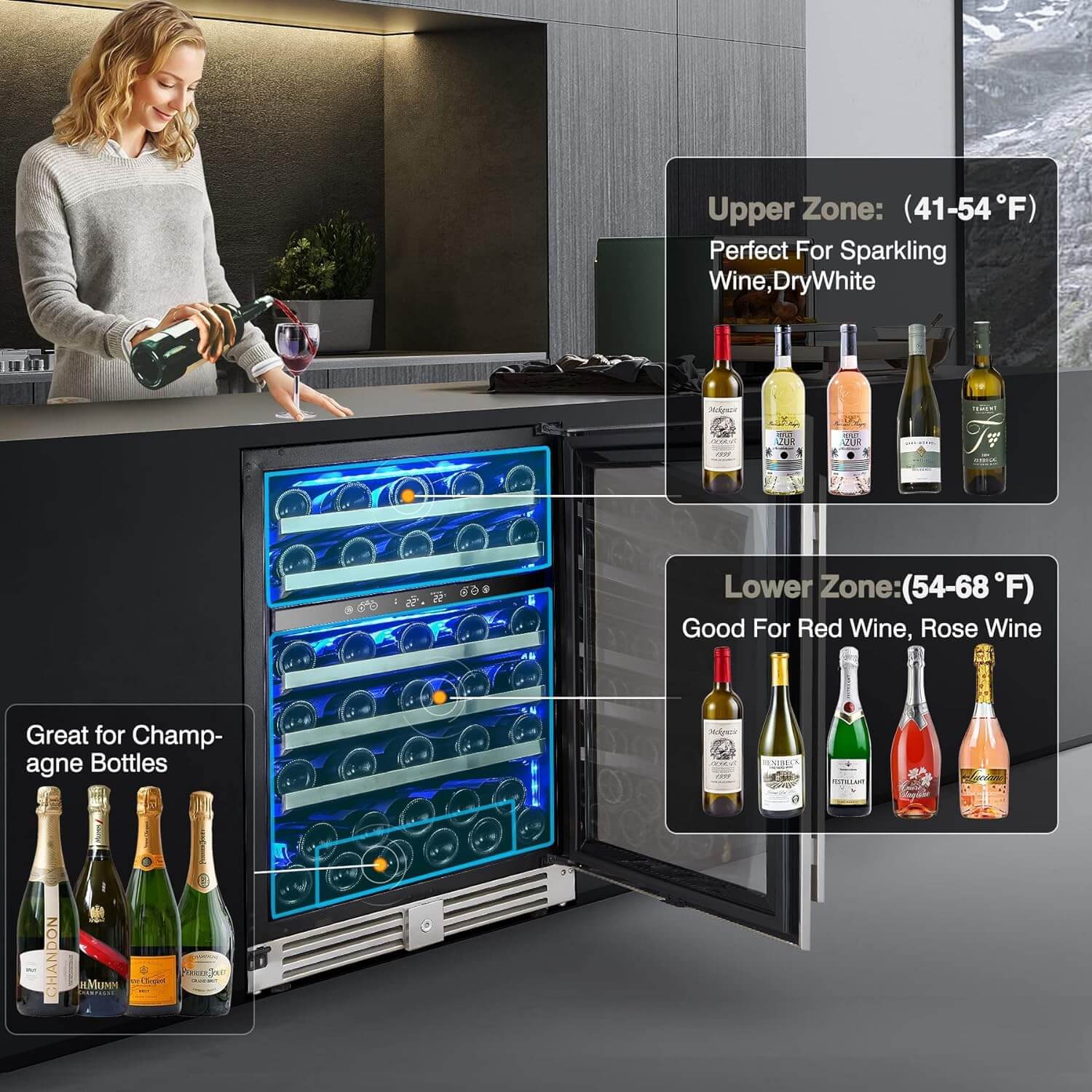As wine enthusiasts, whether red and white wines can peacefully coexist in the same storage environment often arises. In this exploration, we unravel the intricacies of storing red and white wines together at the same temperature and how to achieve a harmonious balance.
The Temperature Spectrum of Red and White Wines
Understanding the unique preferences of red and white wines regarding temperature is crucial before attempting to store them together.

1. Red Wines:
- Red wines typically favor a slightly warmer environment, with an ideal storage temperature ranging between 50°F to 65°F (10°C to 18.3°C). This allows them to mature gracefully, showcasing their complex flavors.
2. White Wines:
- White wines, in contrast, thrive in cooler conditions, with an optimal storage temperature between 45°F to 50°F (7.2°C to 10°C). This preserves their crispness and ensures the vibrancy of their acidity.
Other drinks general guideline:
- Carbonated beverages: 35°F to 45°F (1.5°C to 7.2°C)
- Beers: 45°F to 55°F (7.2°C to 12.8°C)
- Non-alcoholic beverages: 35°F to 45°F (1.5°C to 7.2°C)
Read more: What Temperature Should a Beverage Cooler Be Set At?
The Challenges of Unified Storage
1. Temperature Dilemma:
- The primary challenge arises from the differing temperature preferences of red and white wines, creating a dilemma when seeking a common storage ground.
2. Serving Discrepancies:
- Serving temperatures for red and white wines differ, complicating matters when attempting to store them in a shared space without compromising the tasting experience.
3. Aging Dynamics:
- Red wines often benefit from extended aging, while whites are typically consumed relatively young. Finding a balance for both aging dynamics can be intricate.
4. Humidity Impact:
- The humidity levels that enhance white wine preservation might not align with the requirements of red wines, introducing an additional layer of complexity.
Strategies for Achieving Storage Harmony
1. Dual-Zone Wine Refrigerators:
- Investing in a dual-zone wine refrigerator provides the ideal solution, offering separate compartments with customizable temperatures for red and white wines.

Read more: How to Set Up a Dual Zone Wine Fridge
2. Compromise Temperature:
- If a dual-zone refrigerator is not an option, aim for a compromise temperature around 50-55°F (10-13°C), striking a balance that both reds and whites can tolerate.
3. Strategic Bottle Placement:
- Organize your wine collection strategically, placing bottles that require similar conditions together. This can minimize the impact of temperature variations.
4. Regular Monitoring:
- Keep a vigilant eye on the storage conditions, making adjustments as needed to maintain a stable environment for both red and white wines.
Conclusion
While storing red and white wines together at the same temperature demands thoughtful consideration, it's a venture worth pursuing. With the right strategies and equipment, like dual zone wine cooler enthusiasts can create an environment where the diverse flavors of both reds and whites can coexist and flourish.
FAQs
Q1: Can storing liquor in a wine refrigerator affect the taste of the wine?
While minimal, introducing liquor may subtly impact the temperature and humidity balance, potentially influencing the wine's taste over time.
Q2: Should I store liquor bottles upright or on their side in a wine refrigerator?
Upright storage is preferable to prevent potential leaks and maintain the integrity of the liquor.
Q3: Can I store liqueurs with dairy in a wine refrigerator?
Liqueurs containing dairy or perishable ingredients should be stored in the regular refrigerator to prevent spoilage.
Q4: Are there wine refrigerators designed for both wine and liquor storage?
Some dual-zone wine refrigerators offer separate compartments suitable for both wine and liquor.
Q5: How do I prevent temperature fluctuations in a shared storage space?
Regularly monitor the storage conditions and make adjustments as needed, ensuring a stable temperature for both red and white wines.







